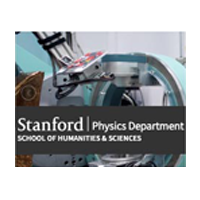
Epitaxial integration of dissimilar semiconductors for infrared optoelectronics
Spilker 232
Integrating dissimilar semiconductors on a single crystal platform can power the next generation of electronics and photonics applications. In such a platform, semiconductors like zincblende-structured III-V and rocksalt-structured IV-VI materials bring exciting new properties to the table and leverage the scale and functionality of conventional silicon technology. The synthesis of high-quality semiconductor thin films while mediating this dissimilarity, however, is quite the materials science challenge. These very differences in properties also lead to unusual interfaces and crystal defects such as dislocations that severely degrade device performance. I will discuss how we continue to understand why dislocations are bad for integrated telecom lasers on silicon for the next generation of datacenters using new microscopy and microanalysis tools and talk about our progress in engineering dislocation tolerance in such devices using III-V (InAs) quantum dots. I will also present recent results from new epitaxial means of integrating mid-infrared IV-VI (PbSe-SnSe-GeSe) light emitters with application in sensing that appear to be naturally dislocation tolerant.
Biography: Kunal Mukherjee is an assistant professor in the Department of Materials Science and Engineering at Stanford University. His research interests are in semiconductor thin film synthesis and defect science. Kunal received his B.Eng. in Electrical Engineering from Nanyang Technological University in Singapore and his Ph.D. in Materials science from MIT. Before joining Stanford, he has been an assistant professor in the Materials department at UC Santa Barbara (2016-2020), held postdoctoral appointments at IBM TJ Watson Research Center and MIT, and worked as a transceiver engineer at Finisar Corporation. Kunal has received the Corbett Prize at the International Conference on Defects in Semiconductors and the National Science Foundation faculty early career development (CAREER) award for his work on semiconductor synthesis and defects.
This seminar is sponsored by the Department of Applied Physics and the Ginzton Laboratory.